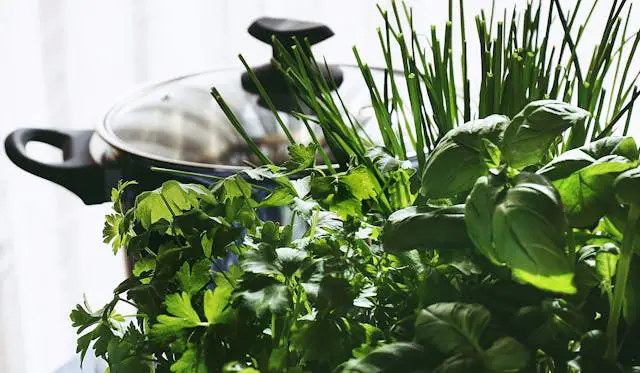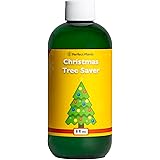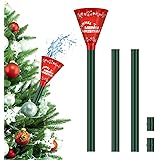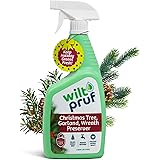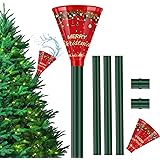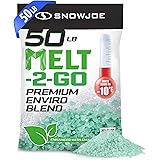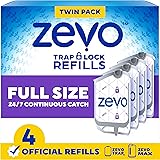Growing herbs indoors year-round is a rewarding endeavor that allows you to enjoy fresh flavors and fragrances regardless of the season. Whether you live in a small apartment or a spacious home, indoor herb gardening is accessible to everyone. This guide will walk you through the essential steps, tips, and tricks to successfully grow herbs indoors all year round.
Choosing the Right Herbs for Indoor Growing
Not all herbs are created equal when it comes to indoor growing. Some adapt well to indoor conditions, while others require more sunlight, space, or specific climate conditions best suited for outdoor growth. Choosing the right herbs for your indoor garden will set you up for success and ensure a steady supply of fresh flavors for your cooking.
Several herbs thrive indoors, thanks to their adaptability to lower light levels and controlled environments. Some of the best options include:
Cilantro (Coriander) – This herb requires consistent moisture and moderate sunlight. It grows quickly but has a short lifespan, so consider succession planting for a continuous supply.
Basil – A popular culinary herb that grows quickly and prefers warmth and bright light. Great for making fresh pesto or adding to salads and pasta dishes.
Mint – A hardy and fast-growing herb that thrives indoors. It prefers slightly moist soil and is perfect for teas, cocktails, and desserts.
Parsley – A versatile herb rich in vitamins, it does well in moderate light and can be harvested frequently to encourage new growth.
Rosemary – A fragrant, woody herb that needs well-draining soil and plenty of sunlight. It’s great for seasoning meats and roasted vegetables.
Thyme – A drought-resistant herb that loves bright light and slightly dry conditions. It pairs well with soups, stews, and roasted dishes.
Lighting Requirements for Indoor Herbs
Lighting is one of the most critical factors in growing herbs indoors. Most herbs require at least 4-6 hours of direct sunlight per day. If your home doesn’t receive enough natural light, consider using grow lights. LED grow lights are an excellent option as they emit minimal heat and can be adjusted to different spectrums.
Soil and Watering
The soil you use for your indoor herbs plays a significant role in their health. Use a high-quality potting mix that drains well to prevent waterlogged soil. Overwatering is a common mistake that can lead to root rot and other issues. Water your herbs when the top inch of soil feels dry to the touch.
Temperature and Humidity
Most herbs prefer daytime temperatures between 65-75°F (18-24°C) and slightly cooler nighttime temperatures around 55-65°F (13-18°C). Humidity levels should be maintained between 40-60%. You can increase humidity around your plants by placing the pot on a tray filled with water and pebbles.
Fertilization and Pruning
Feed your indoor herbs with a balanced, water-soluble fertilizer during the growing season (spring and summer). Dilute the fertilizer to half the recommended strength to avoid burning the roots. Prune your herbs regularly to encourage bushy growth and prevent them from becoming leggy.
Pest Control and Common Challenges
Growing herbs indoors offers many benefits, but it also comes with its own set of challenges. While indoor environments may reduce the risk of some outdoor pests, herbs can still fall victim to common indoor plant invaders. Understanding potential issues and how to address them will help ensure your herbs remain healthy and thriving.
Common Pests and How to Manage Them
- Spider Mites – These tiny pests suck the sap from leaves, causing yellowing, webbing, and overall plant decline.
- Solution: Rinse plants with a strong stream of water, increase humidity, and apply neem oil or insecticidal soap regularly.
- Aphids – Small, soft-bodied insects that cluster on new growth and stems, weakening plants by sucking their sap.
- Solution: Wipe affected areas with a damp cloth, introduce natural predators like ladybugs (if feasible), or spray with soapy water or neem oil.
- Mealybugs – White, cotton-like pests that feed on plant sap and weaken the plant over time.
- Solution: Use a cotton swab dipped in rubbing alcohol to remove them, or spray plants with neem oil.
- Fungus Gnats – Tiny flying insects whose larvae live in overly moist soil and feed on plant roots.
- Solution: Allow soil to dry slightly between waterings, use sticky traps, and add a layer of sand or cinnamon on the soil surface to deter egg-laying.
Common Challenges and How to Fix Them
- Yellowing Leaves – Often caused by overwatering, poor drainage, or nutrient deficiencies.
- Fix: Allow the soil to dry slightly between waterings, ensure pots have drainage holes, and consider using a balanced fertilizer.
- Leaf Drop – Can result from sudden changes in temperature, drafts, or lack of humidity.
- Fix: Keep plants away from vents, radiators, and cold drafts. Maintain consistent room temperatures and use a humidity tray if needed.
- Slow or Stunted Growth – May occur due to insufficient light, poor soil, or lack of nutrients.
- Fix: Place herbs in a sunny window or supplement with grow lights. Use a high-quality potting mix and feed plants with diluted liquid fertilizer every few weeks.
- Leggy Growth – Happens when herbs stretch towards light, making them weak and spindly.
- Fix: Ensure adequate light exposure and rotate plants regularly to encourage even growth. Prune herbs frequently to promote bushier growth.
By being proactive with pest management and addressing common challenges quickly, you can maintain a thriving indoor herb garden that produces fresh, flavorful herbs year-round.
Practical Takeaways and Actionable Insights
Now that you’ve learned the basics of growing herbs indoors, it’s time to put your knowledge into practice. Start by selecting a few herbs you use frequently in your cooking, such as basil, parsley, or mint. These beginner-friendly options grow well indoors and will enhance your meals with fresh, homegrown flavors.
Once you’ve chosen your herbs, ensure they have the right growing conditions—adequate sunlight, proper drainage, and the right soil mix. Position them near a sunny window or supplement with grow lights if needed. Be consistent with watering, but avoid overwatering, as too much moisture can lead to root rot.
As your herbs grow, observe their development closely. Look for signs of pests, nutrient deficiencies, or wilting, and adjust your care routine accordingly. Regularly trim your herbs to encourage bushier growth and prevent them from becoming leggy.
Over time, as you gain confidence, consider expanding your collection by adding more challenging herbs like rosemary, thyme, or cilantro. Experiment with different containers, hydroponic systems, or vertical gardening setups to optimize your space.
Most importantly, enjoy the process! Indoor herb gardening is a rewarding hobby that brings fresh flavors to your kitchen while improving your home’s greenery. Keep learning, experimenting, and refining your approach for a thriving indoor herb garden year-round.
FAQ
Basil, mint, parsley, rosemary, thyme, and cilantro are excellent choices for indoor growing due to their adaptability to indoor conditions.
Water your herbs when the top inch of soil feels dry to the touch. Avoid overwatering, as it can lead to root rot.
Yes, you can grow herbs without direct sunlight by using grow lights. LED grow lights are a popular and effective option.
Inspect your plants regularly and treat any infestations promptly with insecticidal soap or neem oil. Isolate new plants for a few weeks before introducing them to your indoor garden.
Yellowing leaves can be caused by overwatering, underwatering, nutrient deficiencies, or too much direct sunlight. Adjust your care routine accordingly.
Yes, you can grow herbs indoors during the winter. Ensure they receive adequate light, maintain consistent temperatures, and adjust watering as the plants’ growth slows down.
Herbs can be propagated through cuttings, division, or seeds. Take 3-4 inch cuttings from healthy stems, remove lower leaves, and plant them in moist soil. Keep the soil consistently moist until roots develop.
Use a balanced, water-soluble fertilizer during the growing season. Dilute the fertilizer to half the recommended strength to avoid burning the roots.
Conclusion
Growing herbs indoors year-round is a simple and rewarding process that requires attention to lighting, watering, and fertilization. By following the tips and guidelines outlined in this article, you can enjoy fresh, fragrant herbs right in the comfort of your home. Whether you’re a seasoned gardener or a beginner, indoor herb gardening is a great way to bring a touch of nature indoors and enhance your cooking with fresh flavors.
Auto Amazon Links: No products found.
Perfect Plants Christmas Tree Saver 8oz. | Easy Use Xmas Tree Preserver Food | Have Healthy Green Christmas Trees All Holiday Season
$9.97 (as of December 5, 2025 00:43 GMT +00:00 - More info- Product prices and availability are accurate as of the date/time indicated and are subject to change. Any price and availability information displayed on [relevant Amazon Site(s), as applicable] at the time of purchase will apply to the purchase of this product.
Kaiedos Christmas Tree Watering Funnel - 39 Inch Funnel, Reusable Design, Makes Watering Your Live Tree a Snap!
$14.99 (as of December 5, 2025 00:43 GMT +00:00 - More info- Product prices and availability are accurate as of the date/time indicated and are subject to change. Any price and availability information displayed on [relevant Amazon Site(s), as applicable] at the time of purchase will apply to the purchase of this product.
Wilt-Pruf® Christmas Tree/Cutting Preserver Spray |Preserves Christmas Trees, Wreaths, Garlands, Cuttings and Carved Pumpkins | Reduces Needle Drop | Keeps Cut Trees Fresh Longer | Natural (32 oz)
$21.99 (as of December 5, 2025 00:43 GMT +00:00 - More info- Product prices and availability are accurate as of the date/time indicated and are subject to change. Any price and availability information displayed on [relevant Amazon Site(s), as applicable] at the time of purchase will apply to the purchase of this product.
Forest Fresh Christmas Tree Preservative Tablets – Tree Water Additive for Live Fresh-Cut Trees – Keeps Trees Hydrated and Reduces Needle Drop – Non-Toxic, Made in USA – 1 Packet (8 Tablets)
$5.99 (as of December 5, 2025 00:43 GMT +00:00 - More info- Product prices and availability are accurate as of the date/time indicated and are subject to change. Any price and availability information displayed on [relevant Amazon Site(s), as applicable] at the time of purchase will apply to the purchase of this product.
IPOOLTENG Christmas Tree Watering Funnel 3 Tube 1 Funnels 40 Inch - 3 Section Plastic Christmas Tree Funnel Waterer, Long Funnels for Watering Trees, Best Gifts for Your Parents to Water Tree
$14.53 (as of December 5, 2025 00:43 GMT +00:00 - More info- Product prices and availability are accurate as of the date/time indicated and are subject to change. Any price and availability information displayed on [relevant Amazon Site(s), as applicable] at the time of purchase will apply to the purchase of this product.
Cuisinart 6.5" Cast Iron Smashed Burger Press, Round Flat Edge Grill Press for Crispy Smash Burgers, Burger Tool for Grill and Griddle Accessories, for BBQs and Tailgates
$24.99 (as of December 4, 2025 16:51 GMT +00:00 - More info- Product prices and availability are accurate as of the date/time indicated and are subject to change. Any price and availability information displayed on [relevant Amazon Site(s), as applicable] at the time of purchase will apply to the purchase of this product.
Snow Joe Premium Enviro Blend Ice Melt, Green-Coated Deicer Crystals, 50 lb - Safer Melter for Vegetation, Concrete & Metals w/ Anti-Corrosion Calcium Magnesium Acetate
$32.97 (as of December 4, 2025 16:51 GMT +00:00 - More info- Product prices and availability are accurate as of the date/time indicated and are subject to change. Any price and availability information displayed on [relevant Amazon Site(s), as applicable] at the time of purchase will apply to the purchase of this product.
Muddy Mat® Shown on TV Super Absorbent Microfiber Dog Door Mat for Muddy Paws, Non-Slip Washable Pet Rug, Quick Dry Chenille Entryway Carpet, Machine Washable Indoor Outdoor mat, Grey 30"x19"
$19.95 (as of December 4, 2025 16:51 GMT +00:00 - More info- Product prices and availability are accurate as of the date/time indicated and are subject to change. Any price and availability information displayed on [relevant Amazon Site(s), as applicable] at the time of purchase will apply to the purchase of this product.
OLANLY Dog Door Mat for Muddy Paws 30x20, Absorbs Moisture and Dirt, Absorbent Non-Slip Washable Doormat, Quick Dry Chenille Mud Mat for Dogs, Entry Indoor Entryway Carpet for Inside Floor, Grey
$9.99 (as of December 4, 2025 16:51 GMT +00:00 - More info- Product prices and availability are accurate as of the date/time indicated and are subject to change. Any price and availability information displayed on [relevant Amazon Site(s), as applicable] at the time of purchase will apply to the purchase of this product.
Zevo Flying Insect Trap Official Refill Cartridges - Fits Both Zevo Trap & MAX Indoor Fly Trap - Authentic Trap+Lock Technology to Catch Gnats, House & Fruit Flys (4 Official Refill Cartridges)
$14.97 (as of December 4, 2025 16:51 GMT +00:00 - More info- Product prices and availability are accurate as of the date/time indicated and are subject to change. Any price and availability information displayed on [relevant Amazon Site(s), as applicable] at the time of purchase will apply to the purchase of this product.

